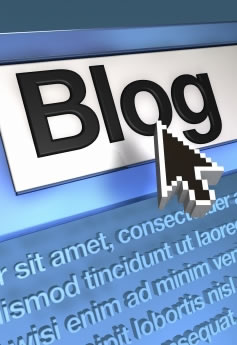Breaking the Wall Between Brand and Business
打破品牌與企業間的藩籬
分享者 / 陳曉峰
原文網址:Link
在最新一期的Market Leader中,我們的核心理念「品牌領導企業」終於得到了一些支持。Neil Dawson在「品牌回應」一文中提到,所有的溝通都應該同時進行兩件事:建立品牌並建立生意。自從本部落格在2001年開張之後,我們就不斷的強調必須打破品牌與企業間的藩籬,並且同時建立品牌與生意。所有的branding相關動作都應該幫助你賣出更多產品才是。
Neil引用的資料來自於IPA廣告資料庫。在過去,溝通被切成「品牌形象」與「直接回應」,且多半是直接行銷。然而,他提出,若要更進一步,得運用建立企業以及品牌的「品牌回應」溝通手法。這些活動在IPA 2000年代的資料庫中構成了37%的案例,與90年代的12%以及80年代的2%形成對比。他舉了三個品牌回應溝通的極佳案例:
1. 完全整合─O2
O2有80%的投資是用在銷售為主的活動上。同時,這些活動亦建立了一個品牌形象最鮮明的品牌。部分的成功可以歸因於其不只是平淡的品牌形象廣告,它同時以同樣的調性來強調他們所提供的服務如Bolt-Ons以及Pay & Go。Neil援用了其短期投資報酬率做為證明,O2每花1塊錢在廣告上,就可以額外賺入6塊錢的收入。這就是我所謂的「賣更多東西」。
2. 品牌概念─Sainsbury's
這第二個例子深得我心,也就是Sainsbury's的「今天就試試新東西吧!」(TSNT)的廣告,因為他並不只是維持一貫的品牌形象,他還提出了一個品牌概念。這個廣告由一個愉悅的主廚Jamie Oliver擔綱演出,並建立在「賣更多東西」這個原則上。Sainsbury's發現他們只要讓每位消費者多花一塊錢,他們就會有額外25億的收入。TSNT是要用來「打亂根深蒂固的消費習慣以增加收入」。這個想法不只在廣告上,另外在店內陳設、買賣促銷上都實現得很貫徹。
Neil再一次的證明了這些活動的效益總共增加了19億的銷售額,而TSNT單方面就貢獻了5.5億。 
3. 創造一個儀式─118 118
Neil的最後一個例子是118 118(英國的查號碼)。剛開始,查號台只有一個號碼─192,由BT(英國電信)所擁有。在市場鬆綁後,許多擁有不同號碼的類似服務大量出現。在此案例中,118 118的成功其實開始於它的產品優勢,也就是這個號碼本身。該品牌大膽的使用了兩億英鎊的行銷預算來取得這個號碼。他們同時也在這個號碼啟用之前的幾個月就大量打廣告以提升品牌知名度並增加需求。
而另一個天才創舉是用了兩位蓄有鬍子的跑者穿著復古背心,兩件背心上分別有118的字樣。這個驚人而有力的品牌形象在消費者間引起了了突出、令人記憶深刻且無價的效果。而講到品牌回應,一千七百萬通的查號需求隨之而來。這兩位跑者也引發了廣大的公關效應,當每次講到政策鬆綁,這兩位跑者的照片就會出現。這個活動幫助了118 118變成了市場的領導者,並且擁有44%的市占率,而英國電信從之前的獨佔減少到剩下34%的市佔率。
結論是,我們現在有強而有力的證據來支持「品牌與生意要同時建立」的想法。套前麥當勞行銷長Larry Light的話來說就是:「所有行銷動作都應該提升銷量,不然為什麼要做行銷?」
Nice to get some support for our core principle of "brand-led business" in the latest edition of Market Leader. Neil Dawson's piece on "brand response" suggests all communication should do two jobs at the same time: build the brand and build the business. Hoo-bloody-ray! Since starting the brandgym in 2001 we've been campaigning to break down the wall between "brand" on the one hand and business building on the other. All branding should help you "SMS" (sell more stuff).
Neil uses hard data from the IPA advertising data base. In the past communication was split between "brand image" work and "direct response" work, more direct marketing. However, the way forward, he suggests, is "brand response" communication that builds the business and the brand. These campaigns made up 37% of the case studies in the IPA data base in the 00's, versus only 12% in the 90's and 2% in the 80's. Here are three great examples of effective brand response communication he uses.
1. Total integration - O2
O2 is a brand I've posted on several times, as a great example of creating an impactful and consistently executed brand world. Neil brings some new data to the table, stating that 80% of O2's investment was on sales-driving activity. At the same time, these campaigns did a great job of creating a brand with the strongest brand image across the range of key image attributes. Part of this success was focusing not on bland image advertising, but rather on promoting service propositions such as Bolt-Ons and Pay & Go in an integrated, coherent fashion. And boy did it work. Neil quotes a short-term payback of 6 to 1. In other words, £6 of extra revenue for every £1 of advertising. That's what I call SMS :-)
2. Brand idea - Sainsbury's
I like the second example, Sainsbury's "Try something new today" (TSNT) campaign, as it’s about a big brand idea, not just a consistent brand image. The TSNT campaign, starring young cheery chappy chef Jamie Oliver, was based on SMS principles. Sainsbury's saw that getting each shopper to spend only £1 more per trip could generate £2.5 billion in extra sales. TSNT was designed to "interupt ingrained shopper baheviour and drive incremental purchase", says Neil. The idea was driven through not only advertising, but also store design, merchandising and promotion of powerful propositions, such as "Feed Your Family for a Fiver" and the "Taste the Difference" premium range.
Again, Neil has some killer data. The total effects of the campaign were £1.9billion in incremental sales. And somehow he has done some clever modelling to show that the TSNT idea itself contributed £550million of this. 
3. Creating a cult - 118 118
Neil's final example is 118 118, the directory enquiry service (where you call to get a phone number). Originally there was only one number, 192, owned by BT. When the market was deregulated, a load of different services with different numbers came out. The success of 118 118 actually started with the product sausage, which in this case was the number itself. The brand owners boldly used £2million of their marketing budget to get this highly memorable number. They also started advertising several months before the number went live to build awareness and pent-up demand.
In conclusion, we now have some powerful data to back up our belief that building the brand and building the business are one job, not two. In the words of Larry Light, ex-CMO of McDonald's, "all marketing should be sales promotion. If not, why the hell are you doing it?!"

